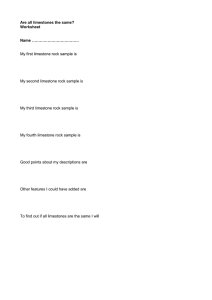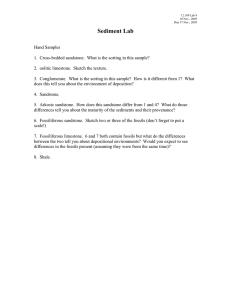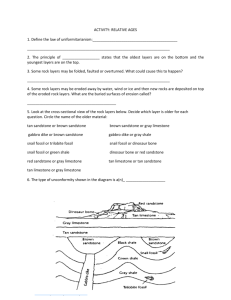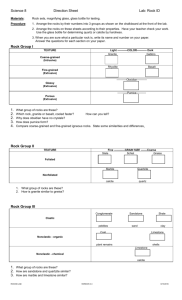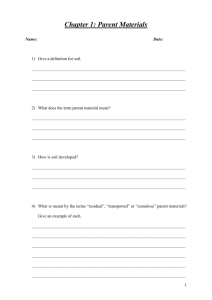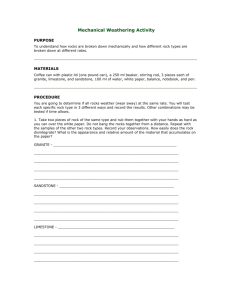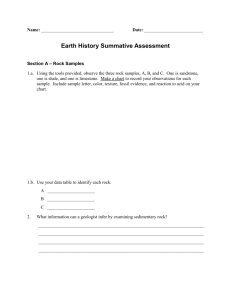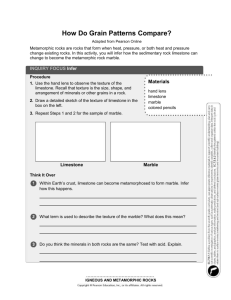A road metal.
advertisement
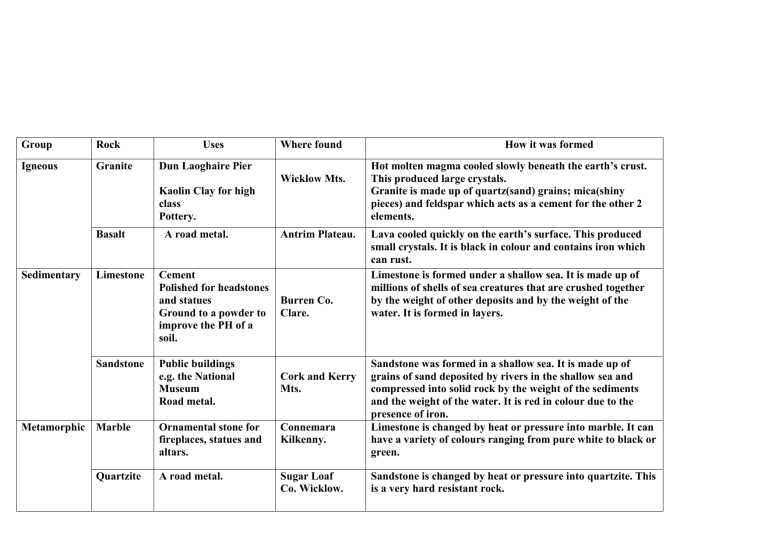
Group Rock Igneous Granite Uses Where found Dun Laoghaire Pier Wicklow Mts. Kaolin Clay for high class Pottery. Basalt Sedimentary Limestone Sandstone Metamorphic Marble Quartzite A road metal. Cement Polished for headstones and statues Ground to a powder to improve the PH of a soil. Public buildings e.g. the National Museum Road metal. Antrim Plateau. Burren Co. Clare. Cork and Kerry Mts. Ornamental stone for fireplaces, statues and altars. Connemara Kilkenny. A road metal. Sugar Loaf Co. Wicklow. How it was formed Hot molten magma cooled slowly beneath the earth’s crust. This produced large crystals. Granite is made up of quartz(sand) grains; mica(shiny pieces) and feldspar which acts as a cement for the other 2 elements. Lava cooled quickly on the earth’s surface. This produced small crystals. It is black in colour and contains iron which can rust. Limestone is formed under a shallow sea. It is made up of millions of shells of sea creatures that are crushed together by the weight of other deposits and by the weight of the water. It is formed in layers. Sandstone was formed in a shallow sea. It is made up of grains of sand deposited by rivers in the shallow sea and compressed into solid rock by the weight of the sediments and the weight of the water. It is red in colour due to the presence of iron. Limestone is changed by heat or pressure into marble. It can have a variety of colours ranging from pure white to black or green. Sandstone is changed by heat or pressure into quartzite. This is a very hard resistant rock.

